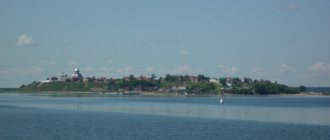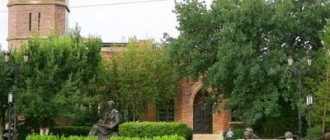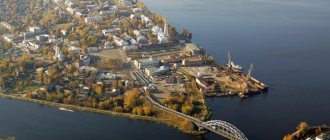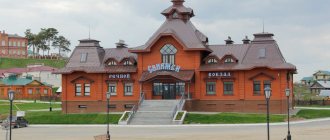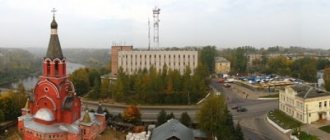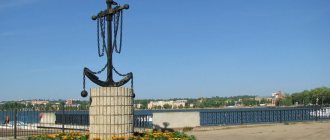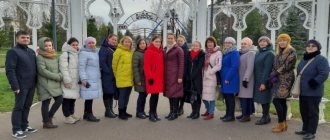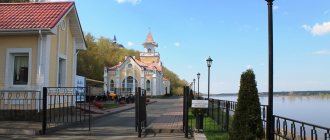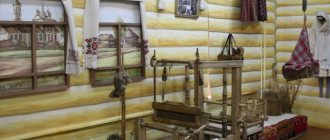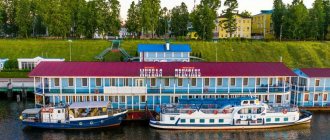Sviyazhsk is a real city-museum, located on a picturesque island at the confluence of Sviyaga and the Volga. Its beauty is made up of magnificent sights - historical buildings, ancient white stone temples and the walls of ancient monasteries. The winding streets are framed by green alleys and decorated with unusual sculptures. This small town offers tourists many interesting places that not only provide entertainment, but also take them on an excursion into the rich history of the island.
Story
Ivan the Terrible himself decided to build a fortified city after a series of failed operations to capture Kazan. It was necessary to create a stronghold to support the army. The island was washed on three sides by the waters of the Shchuka, Sviyaga and Volga rivers, from the elevated area - Round Mountain - distant approaches were visible, and most importantly, the island was located at a distance of a day's march from the capital of the Kazan Khanate.
The fortress was built unnoticed by the enemy. First, fortifications were built near Uglich. After that, they were dismantled and, with the onset of spring, the logs were floated along the Volga to the island, then dragged to the foot of the Round Mountain. It took one month to reassemble the fortress. The construction was led by the famous Russian architect of that time, Ivan Vyrodkov.
The city consisted of eighteen towers, residential buildings and an Orthodox church. The fortress fully fulfilled its purpose: a year after its foundation, Kazan was taken.
19th century secular buildings
Sviyazhsk was a county town with typical architecture of its time. But thanks to its “isolation” from the outside world (it became an island after most of the area was flooded due to the construction of the Kuibyshev hydroelectric station in 1955), the civil buildings of the 19th century were not rebuilt and were preserved in the best possible way (as, for example, in Torzhok ). The street names are pre-revolutionary. Here you will see residential (Uspenskaya and Nikolskaya streets) and government houses (Uspenskaya street), barracks of an engineering regiment (Uspenskaya street), a city school, a building of a lower vocational school (on the central square) and other buildings.
History of the name
Initially, the settlement was called “Novograd Sviyazhsky”. The name of the town comes from the Sviyaga River. Over time, the original name was shortened.
The city's coat of arms was approved only at the end of the 18th century. It is a shield depicting a city sailing on a ship with fish underneath. This emblem fully reflects the amazing history of the construction of the town.
After the conquest of the capital of the Kazan Khanate, the town lost its military significance. Soon the island became a quiet monastic place. With the advent of Soviet power, the history of the town changed dramatically. It was almost completely looted. Over time, prisons and correctional camps were built on the site of temples and monasteries.
Nowadays, the island of Sviyazhsk has been turned into one of the key attractions of the Republic of Tatarstan. Travelers are greeted by white stone monasteries and golden domes of temples. The miracle island hospitably welcomes tourists. Sights attract travelers from all over our country.
Cultural and natural landscape of Sviyazhsk.
Comprehensive restoration and reconstruction work in the fortress and cathedrals has been carried out in Sviyazhsk since 2010 under the “Renaissance” program; at the same time, the city’s housing stock is being updated, new premises are being built for cultural institutions, hotels, etc.
In 2022, an application was submitted for inclusion in the list of sites under the protection of UNESCO, the Assumption Monastery and the Trinity Church.
Attractions
The city has a rich history. On its territory there is a huge number of religious Orthodox buildings. Be sure to visit:
- Assumption Monastery.
It was built in the middle of the 16th century, a few years after the founding of the city. The first abbot of the monastery was canonized. The main relic is the relics of St. Herman. According to legend, at the beginning of the 20th century, in the wake of the propaganda of atheism, the container with the relics was opened, after which a terrible tornado began to rage, which terrified the people present. In the 30s of the 20th century, a correctional colony was created on the island, as well as an NKVD prison.
- St. Nicholas Church.
It is considered one of the most ancient on the territory of the monastery. It was built from cut stone. A short time later, a bell tower was added to the structure. Its height was 43 meters. This is the tallest building in the town. St. Nicholas Church is visited exclusively by monks.
- Assumption Cathedral.
The temple was built in the second half of the mid-16th century. The style of the building is Pskov-Novgorod. The authors of the project were the creators of Moscow's St. Basil's Cathedral - Ivan Barma and Postnik Yakovlev. The temple is a unique architectural monument. The building is a rare example of Russian art of the sixteenth century. The surviving fresco on the wall of the cathedral depicts St. Christopher with a dog's head. At the Moscow Council in 1667, bestial images of saints were banned and destroyed.
- Trinity Church.
It is part of those buildings that were originally transported to the island by water. Today, this is the only building remaining in the village from those times. The interior decoration of the church has changed over the centuries. Only the configuration of the iconostasis remained unchanged. Over the centuries, the temple was constantly completed. Now it is almost completely restored.
- John the Baptist Monastery.
Built at the end of the 16th century. In the middle of the 18th century, the building was seriously damaged due to fires. Therefore, the monastery received the buildings of the Trinity-Sergius Monastery, which at that time had already been abolished. During Soviet times, there were ordinary warehouses inside the cathedral.
- Cathedral of Our Lady of All Sorrows Joy
. The most impressive religious building on the island. It was built at the end of the 19th - beginning of the 20th centuries. The style of the temple is Byzantine. This iconic building has changed little in a hundred years. The only negative is that during the years of Soviet rule the wall painting was completely destroyed. Now work to restore it is in full swing.
- Church of Constantine and Helena.
It is one of the earliest buildings. The religious building was built by order of Ivan the Terrible immediately after the construction of the fortified city. The church was originally built from wood. But later it was converted into a stone structure. The temple is located on a coastal slope. From here you can enjoy fantastically beautiful views of nature.
- Church of St. Sergius of Radonezh.
Originally made of wood. At the beginning of the 17th century, a new church was built from white limestone. The church is undergoing a re-lighting procedure. This fact is indicated in the chronicle. In winter, the sarcophagus with the remains of St. Herman is placed in this church. - State Historical, Architectural and Art Museum-Reserve "Island-city of Sviyazhsk"
. The institution is located on Moskovskaya Street, 6. It is open to visitors from 10 a.m. to 6 p.m. The museum has one day off a week - Monday. This institution regularly hosts exhibitions dedicated to the history of the city and the region, and organizes walking tours around the town. There you can learn more about the history of the city and visit a lot of interesting places. - Secular buildings of the 19th century
. At one time, Sviyazhsk was a classic county town. Most of the buildings of the 19th century were flooded due to the construction of the Kuibyshev reservoir. - Memorial structures.
Near the central city square there is the “
Wall of the Communards
”.
Next to it is a small obelisk. This is the place where the Red Guards were shot in 1918. There is another memorial next to the Assumption Monastery; it is dedicated to the victims of political repression
.
It was erected after the discovery of a large burial, which dates back to the early forties of the 20th century. At that time, the NKVD prison
. A study of the remains of people showed that some of the prisoners were shot, and the other part died of starvation. - "Horse yard".
Located on the territory of the museum complex. It houses various workshops. The museum consists of several buildings, including a working stable, a gift shop, a guest house and a restaurant.
There are also many unpreserved religious buildings in the town. The places where they were located are marked with signs. Most of these churches look like ruins today. The destroyed churches include the following: Sophia and St. Nicholas churches, the Church of the Annunciation of the Blessed Virgin Mary, the Cathedral of the Nativity of the Blessed Virgin Mary, the Annunciation Parish Church, the Gate Church of the Ascension, the Brethren Corps and the Church of St. Herman. Almost all of them were destroyed in the first half of the 20th century by the Bolsheviks.
Memorial structures
The difficult post-revolutionary times left their mark on the life of the city. Not far from the central square there is the “Wall of the Communards” with a small fenced obelisk - the site of the execution of the Red Guards in 1918.
At the wall of the Assumption Monastery you will see a stele - this is a monument to the victims of political repression. It was installed after a mass grave was discovered on the island in 2010, dating back to the 1940s - the time when the NKVD camp was located here. Judging by the remains, some prisoners died of disease and starvation, while others were shot.
Interesting Facts. Monument to Judas
to Judas allegedly discovered on the territory of Soviet Russia.
. The installation of the monument was supposedly personally directed by Leon Trotsky. This famous revolutionary was sometimes called the "demon of the revolution."
According to legend, the format of the monument to the main biblical villain was approved by Lenin himself. It is believed that Trotsky initially wanted to erect a monument to Lucifer himself. However, Lenin banned this project, since the installation of such monuments would indirectly confirm faith in God. The project for a monument to Cain was also rejected by the leader of the world proletariat. Therefore, the revolutionaries converged on a monument dedicated to Judas.
According to legend, the opening of the monument took place with an orchestra and a parade of two Red Army regiments. After the fabric was torn from the monument, the amazed residents of the city saw a full-length stone human figure. The Judas monument depicted a crouching biblical antagonist with his arms raised. Rumor has it that the prototype of the monument was Trotsky himself.
Of course, this story is 100% fiction. Similar rumors were spread by former White Guards who were forced to immigrate from the country after the Bolshevik victory. There are quite a few references to the existence of monuments to Judas in Soviet Russia. In particular, the famous Danish diplomat Henning Koehler writes about the monument in his memoirs. He claimed to have witnessed its installation in 1918.
Let us note that many contemporaries fully trusted such rumors, since they were hostile towards the Bolsheviks. In particular, the famous Russian writer Ivan Bunin believed the information about the installation of the monument to Judas. Naturally, nothing like this ever happened.
There is a completely logical explanation for these rumors. The commander of the Red Army who took Kazan was the famous leader of the Latvian riflemen. His name was Yan Yudin
. During the fighting, this officer was killed. Moreover, the date of his death approximately coincides with the time of installation of the “monument to Judas.”
In fact, they were talking about the funeral of Yan Yudin. A monument was actually erected to him. It is known that he died from an accidental shell fired by the White Army artillery. The Dane Köhler could well have confused the consonant surname with “Judas”.
Chapel of Constantine and Helena
Meanwhile, we are going up Rozhdestvenskaya Street, turning onto the street. Konstantinovskaya and approach the chapel of the Holy Equal-to-the-Apostles Tsar Constantine and his mother Helen.
The wooden church erected under Ivan the Terrible has not survived. We can see a stone temple from the late 17th century. The church is white stone, with Baroque elements in architecture. It looks very elegant.
Chapel of Constantine and Helena.
Location, how to get there, opening hours of the museum.
You can get to Sviyazhsk from Kazan in the following ways:
- Personal car.
You can get there by car by driving along the M7 highway in the direction of the capital of Russia. You need to get to the village of Isakovo and then follow the sign to the city. The journey by private car will take no more than sixty minutes. - Steamboat.
Ships to the island depart from the river station of the capital of Tatarstan. The journey takes no more than two hours. You can board the ship from 6.00 to 20.00. One hour before the ship's departure, you can purchase tickets. In summer, ships depart daily. From the first autumn month to October 16, you can only get to the attraction on weekends. - Bus.
At the bus station of the capital of Tatarstan it is possible to buy a ticket to the town. The route and number of stops may vary for different flights. But most bus routes purposefully take tourists to see the beauty of the city and plunge into the enchanting world of Russian antiquity. Bus tickets are quite affordable. - Electric train.
You can also get to your destination from the capital of Tatarstan by rail. However, you should know that the Sviyazhsk station is located several kilometers from the city itself. The railway junction is located in a neighboring village called Nizhnie Vyazovye. From there you can quickly hitch a ride to the village.
What to see with your child
If you are visiting Sviyazhsk with a child, then excursions tailored to the child’s age will be selected for you. The little ones will be able to take a walk along “Buyan Island” or “Pushkin Lukomorye”, and older children will enthusiastically visit the ruins of the fortress, listen to legends about it and climb to its highest point.
There is a legend that Alexander Pushkin, sailing past the island of Sviyazhsk, exclaimed: “But this is my island Buyan from the fairy tale “About Tsar Saltan”!
Children will also be interested in the historical playground called “Lazy Torzhok”, located on Rozhdestvenskaya Square. Here you can take part in historical battles, trying on the role of a warrior, watch knightly fights, study military costumes and even make a souvenir with your own hands. Entrance to the site by ticket, price - 80 rubles.
In the Lazy Torzhok complex you can watch the battles of knights
Excursions. Prices for museum tickets.
Most museums in the city operate as usual from 10 a.m. to 6 p.m. The cost of visiting, as a rule, does not exceed eighty rubles. Tourists also have the opportunity to purchase a single ticket to all museums in Sviyazhsk. Such a purchase is profitable because it saves up to twenty percent.
A visit to the attraction will be interesting for both adults and children. On the territory of the Horse Yard there is an opportunity to ride a horse. Children will also enjoy the cultural, stylized medieval town. Here you can compete in archery and try on real armor. On weekends, staged knightly battles and spectacular shows are held on the territory of the center.
You can have lunch at the art cafe “Fisherman’s Compound”. This place looks like an old fisherman's hut. It offers excellent views of the river. There is also a cafe “Buyan” in the town. The “Tavern” is located on the territory of the Horse Yard. Each of the listed establishments has delicious food and affordable prices.
Guests can stay overnight at the Sviyaga Hotel, located in an old almshouse from the 19th century. Price - from 1000 rubles per day.
The best time to visit the town is summer. But a trip to this amazing place can be made in winter. At this time he looks especially beautiful and interesting.
You can also visit the fabulous island on a bus excursion to Sviyazhsk.
My tips
My main advice to all guests of the island is to be sure to go to the khachapura shop on Aleksandrovskaya Street (next to St. John the Baptist Monastery). I have heard more than once from visitors that they come to Sviyazhsk specifically for excellent khachapuri (we ourselves are guilty of this matter). But you will understand everything yourself when you try. Perhaps the atmosphere and good people made the place what it is, but that doesn’t matter! The shop is run by a Georgian family - spouses - who bake and serve themselves.
Having been there several times, I somehow missed a shop with delicious, according to my friend, bread! It is located in the Horse Yard; it should be on the map. Firstly, baked goods are stored for a very long time and do not lose their taste (and this is not due to chemical additives), and secondly, Prokhor (but this is not certain) offers and sells goods using sayings, and is very humorous. Just like at fairs in old Russian fairy tales :) Thanks to my friend, I now have a wonderful justified excuse to visit Sviyazhsk again.
- Where to stay in Kazan
- In addition to Sviyazhsk, find out what you must see in Kazan!
Cannon "Devka's head"
Sviyazhsk, created as a fortress, had the latest weapons for that time - cannons. Each of them was different from the other, had its own name and stood in different places of the fortification. The city's Nativity Gate was defended by the Devkin's Head cannon. She got her name thanks to the image on her gun carriage of a female head, similar to the Gorgon Medusa. The cannon installed in front of the local history museum is a copy, created according to drawings found in ancient chronicles.
What to eat?
Speaking of buns. We recommend. Lots of cheese and delicious. At the time of our visit, such a bun cost 50 rubles, there is a bakery behind the monastery cells, you need to go behind them, closer to the wall. If you see a bunch of people and a smell, go right.
